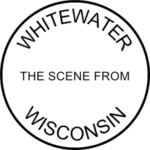Good morning.
The end of the work week in Whitewater will be partly cloudy with a high of seven. Sunrise is 7:25 AM and sunset 4:37 PM, for 9h 12m 10s of daytime. The moon is a waxing gibbous with 57.3% of its visible disk illuminated. Today is the {tooltip}fifty-ninth day.{end-texte}Days since Trump’s election, with 11.9.16 as the first day.{end-tooltip}
On this day in 1941, Pres. Roosevelt presents his Four Freedoms speech to Congress. On this day in 1759, George Washington marries Martha Dandridge Custis.
Recommended for reading in full —
NBC News reports Inside the Russian Hacking Report That President Obama Received Thursday:
Amber Phillips offers Six big takeaways from the extraordinary congressional hearing [yesterday] on Russian hacking: “2. Russia’s leaders authorized some of the hacking. The three intelligence officers [Director of National Intelligence James R. Clapper Jr., Adm. Mike Rogers, commander of the U.S. Cyber Command and director of the National Security Agency Defense Undersecretary for Intelligence Marcel J. Lettre II] released a statement before the hearing. One key line in it read that only “Russia’s senior-most officials” could have authorized the hacking of the Democratic Party’s emails. The leaks arguably had an impact on Democrats at a critical moment in their campaign: You’ll recall that some of those emails were leaked on the eve of the Democratic National Convention in the summer and resulted in the resignation of Rep. Debbie Wasserman Schultz (D-Fla.) as chairman of the Democratic National Committee. This assertion that Russia’s top leaders signed off on this directly flies in the face of Trump’s insistence on repeatedly giving Russian President Vladimir Putin the benefit of the doubt. Shortly before the new year, Trump praised Putin for not retaliating to President Obama’s sanctions on Russia for the hacking.”
Evan Perez, Jim Sciutto and Pamela Brown report on the Intel report says US identifies go-betweens who gave emails to WikiLeaks: “Washington (CNN)- US intelligence has identified the go-betweens the Russians used to provide stolen emails to WikiLeaks, according to US officials familiar with the classified intelligence report that was presented to President Barack Obama on Thursday. In a Fox News interview earlier this week, WikiLeaks founder Julian Assange denied that Russia was the source of leaked Democratic emails that roiled the 2016 election to the detriment of President-elect Donald Trump’s rival, Democrat Hillary Clinton.”
Meanwhile, along Hübschhorn East ridge, Simplon pass, Switzerland —

